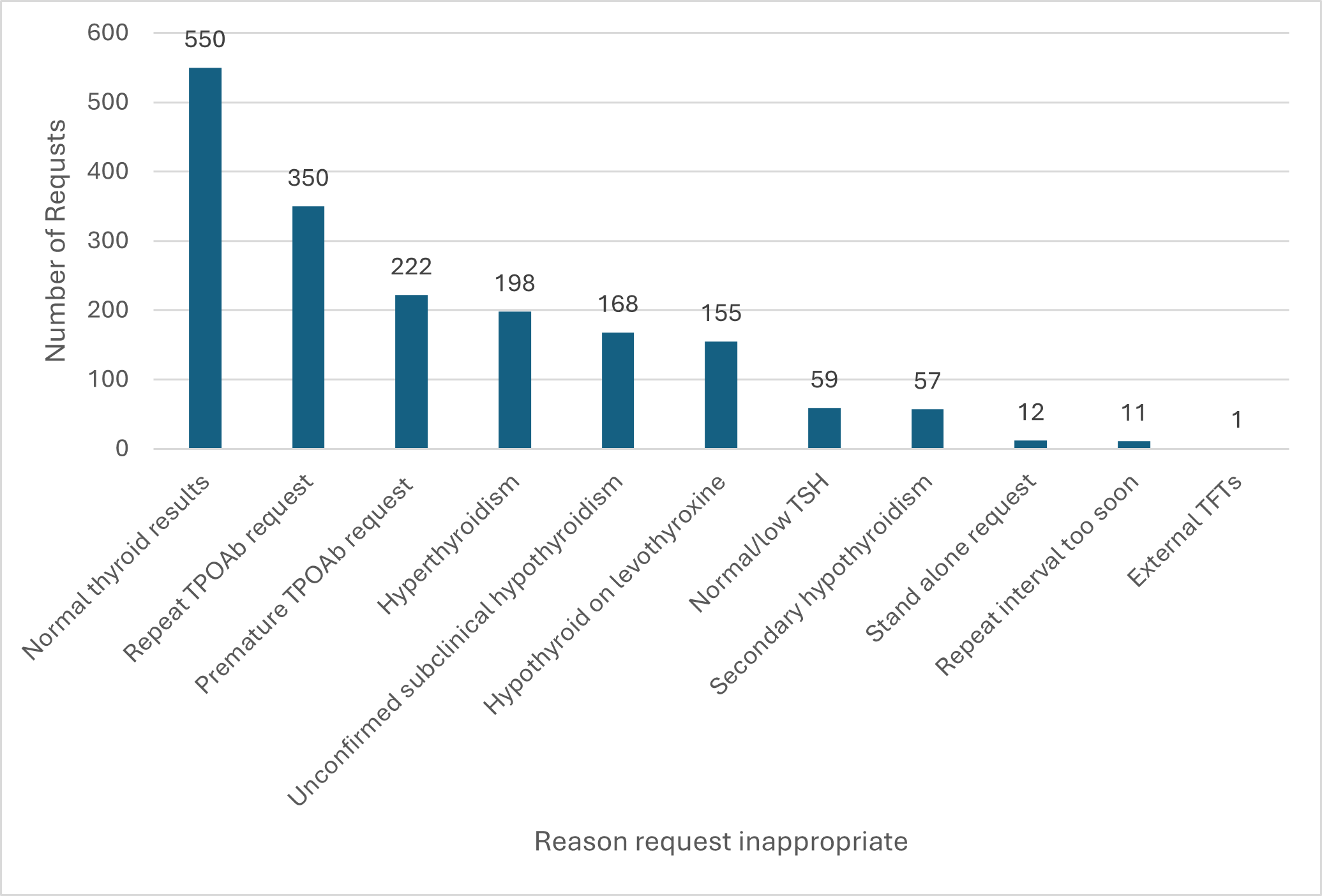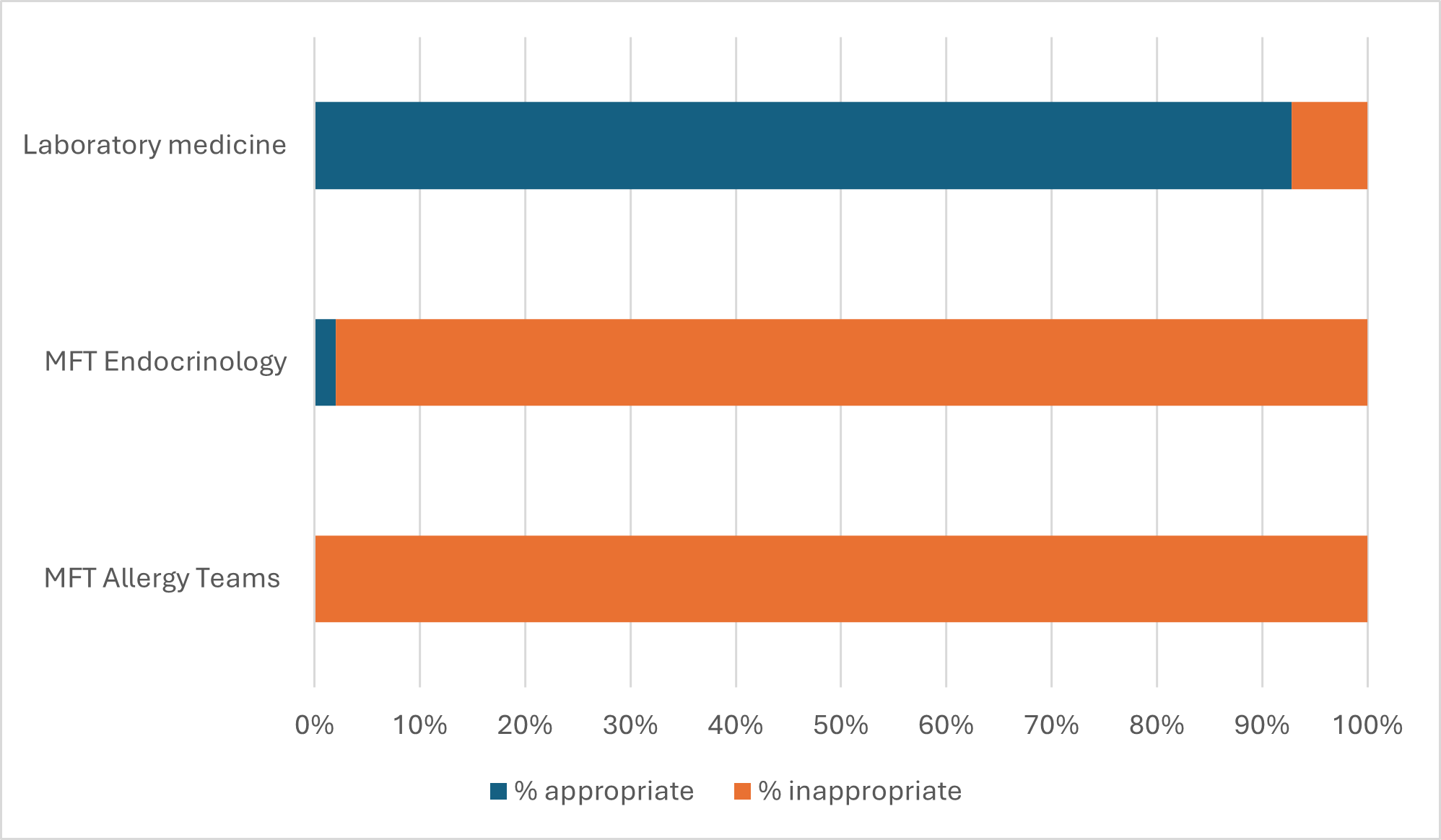By Jo Adaway
Consultant Clinical Biochemist
September 2025
Thyroid Peroxidase Antibody (TPOAb) testing is a frequent request received by the biochemistry laboratory. However, recent findings suggest that many of these requests may not be clinically appropriate.
The measurement of autoantibodies against thyroid peroxidase is useful in the identification of patients with autoimmune thyroid disease. TPOAb are thought to be significantly involved in the pathogenesis of hypothyroidism. The presence of TPOAb is an indication for treatment in those presenting with subclinical hypothyroidism.
An audit was prompted to evaluate the appropriateness of adult TPOAb requests over a six-month period. The audit used standards established by NICE Guidance NG145 which recommend TPOAb requesting in:
- Confirmed (untreated) primary hypothyroidism
- Confirmed subclinical hypothyroidism (two elevated TSH results at least six weeks apart)
- First-time testing only (repeat testing is not indicated in adults)
The results revealed that 59.1% of all adult TPOAb requests were inappropriate. Notably, 22% of all requests were repeat tests, which are typically unnecessary.
Figure 1. All inappropriate TPOAb requests (1,783/3,016) categorised by the reason they were deemed inappropriate.
Figure 1 categorises all inappropriate TPOAb requests by the reason they were deemed inappropriate. The most common reason for inappropriate requests was the presence of normal thyroid function tests (TFTs), accounting for 31% of the total. Repeat requests followed closely, making up 20% of the inappropriate cases. Other reasons included premature testing (made without confirming subclinical hypothyroidism first), requests in the context of hyperthyroidism, and testing in patients already on levothyroxine.
Figure 2. A bar chart to depict the proportion of appropriate requests to inappropriate requests categorised by location: Primary Care, Secondary Care, and Laboratory Medicine.
Figure 2 presents a bar chart comparing the proportion of appropriate versus inappropriate requests across primary care, secondary care, and laboratory medicine (staff who add on the test in the laboratory when reviewing the results). Laboratory medicine demonstrated a significantly higher proportion of appropriate requests, supporting the recommendation to make TPOAb requesting laboratory orderable.
Overall, the audit highlights that the majority of TPOAb requests were made inappropriately. To address this issue, it is recommended that TPOAb requests become laboratory orderable only, with exceptions for select secondary care departments. This change would likely reduce the number of inappropriate requests originating from primary and secondary care and ensure better alignment with clinical guidelines. For general practitioners, this audit serves as a reminder to carefully consider the clinical context before requesting TPOAb testing. Ensuring that requests align with NICE guidance and avoiding unnecessary repeat testing can help enhance patient care and optimise the use of laboratory resources.
 In this section
In this section

